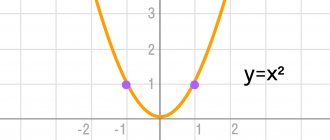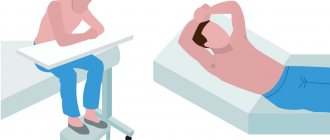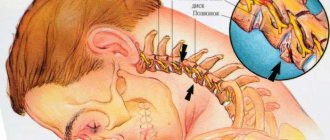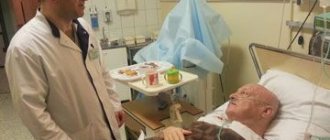- 19 September 2021 12:09
| Quantity |
Heart attack is one of the leading causes of death worldwide, which could have been avoided if people had been able to recognize a heart attack in time and seek medical help. Every person should know the main signs of a heart attack, in the event of which it is necessary to urgently call an ambulance in order to save the life of yourself or your neighbor.
Classifications of heart attacks
There are three types of heart attacks. Below are their characteristics. In addition, the table shows the organs in which necrotic processes begin against the background of impaired blood circulation.
| Type of heart attack | a brief description of | The organ that is affected |
| Ischemic (white) | Stopping the movement of blood in the vessels. Dry necrosis appears. Tissues and cells are not supplied with nutrients. | Brain, kidneys, spleen, heart. |
| Hemorrhagic (red) | Occurs due to congestion in the veins. The necrosis zone is saturated with blood, its excess causes cell damage, which is why this type of infarction is called “red”. | Lungs, intestines, brain, spleen. |
| Anemic or ischemic with hemorrhagic belt | It combines two types of lesions - dry necrosis with hemorrhage. The affected area is light with a red rim. | Heart, kidneys, spleen. |
Note: If two main human organs are affected - the brain and heart, the probability of death is up to 90%.
In the classification of myocardial infarction, the following types are distinguished:
- painful;
- painless;
- abdominal;
- cerebral;
- combined;
- atypical.
Depending on the depth of damage to the heart muscle, a heart attack occurs:
- subendocardial (in the deep layers of the myocardium);
- subepicardial (in the outer layers);
- intramural (in the thickness of the muscular walls of the myocardium);
- transmural infarction (on the anterior wall of the heart).
Depending on the affected area, focal or extensive infarctions are distinguished. Focal infarction leads to shallow necrosis and affects minor areas. Areas of necrosis subsequently become scarred. With timely assistance provided, there is no serious threat to the patient’s life.
With an extensive infarction, the zone of necrosis extends to all layers of the heart muscle and affects large areas. The condition is complicated by cardiac ruptures, painful shock, thromboembolism, symptoms of “acute abdomen,” and pericarditis. Most of the heart cells die and are no longer restored. This leads to the patient's postmortem diagnosis of “death from a heart attack” in 80% of cases.
Factors of occurrence
The main cause of a heart attack is a disruption in the functioning of the circulatory system. This can be influenced by several factors, which include:
- Abrupt cessation of arterial blood flow through a coronary vessel (when the lumen of the vessel closes).
- A discrepancy between the need of the myocardium (the middle muscular layer of the heart) for oxygen and the ability of the coronary vessels to provide this necessary need. Under normal conditions, the myocardium takes 70-75% of the oxygen contained in the blood from the blood. For comparison: muscle oxygen demand is about 25-30%. That is why the heart depends so much on the ability of the coronary arteries to adequately respond to changes in workloads in the myocardium itself.
- Arterial hypertension – when high blood pressure causes the heart to work faster, which means the wear and tear on the muscles and blood vessels increases significantly.
- Thrombophlebitis.
- Stagnation and accumulation of fluids of various etiologies between the membranes of the heart muscle.
- Heart damage due to injury or poisoning.
If it is not possible to quickly restore blood circulation, then there will be a threat to life, and everything may end in the death of the patient.
Reasons that worsen the functioning of the heart and circulatory system:
- pathology of lipid metabolism, when the amount of fat, cholesterol and triglycerides in the blood increases. This helps to reduce the lumens of blood vessels, which leads to poor circulation.
- decreased motor activity. In patients who are bedridden, death from a heart attack occurs more often.
- the patient is overweight.
- diseases of the endocrine system (diabetes mellitus).
- presence of bad habits (alcoholism, smoking).
- hypertension.
- burdened heredity.
- history of prolonged or short-term loss of consciousness.
- previous operations on the heart muscle.
- heart failure.
- increased tone of the nervous system.
- high heart rate (90 beats per minute), etc.
Symptoms
With an impending myocardial infarction, the following picture can be observed:
- there is severe sudden pain in the chest or behind the breastbone, which radiates (radiates) to the arms, back, stomach, neck, shoulders or even jaw;
- the patient does not have enough air, he begins to inhale forcefully;
- dizziness appears, cold sweat appears, the skin turns pale;
- a feeling of extreme fatigue increases;
- Nervousness, feelings of anxiety, and causeless panic increase.
Having noticed that a person is in a similar condition, it is necessary to urgently call a team of doctors. When talking to the dispatcher, it is necessary to inform that the patient is suspected of having a heart attack. A fully equipped ambulance with a cardiograph and appropriate medications will be sent to such a call.
Often myocardial infarction has no permanent symptoms. This is explained by different zones of localization of necrosis and, depending on this, different intensity of the resulting pain symptom. This state of affairs makes diagnosis difficult. Often the patient and his surroundings do not have time to adequately respond to a heart attack: the absence of heart rhythms occurs very quickly. Sudden cardiac arrest can occur in the complete absence of any symptoms. The absence of characteristic signs makes it difficult to urgently hospitalize the patient. That is why, with a massive heart attack, people die suddenly at home, and often there is no person nearby who can recognize the pathological process and provide first aid.
Forms of release of the drug and their effect on the body
The medication is available in several forms, each of which has a detrimental effect on the body.
Tramadol tablets
Tramadol in the form of capsules and tablets is taken enterally. In this case, the effect occurs half an hour after application. Enteral administration of tramadol leads to accumulation of the substance in liver cells, intoxication and disruption of the gastrointestinal tract. A person suffers from gastritis, peptic ulcers of the stomach and duodenum, cirrhosis and pancreatitis.
Tramadol injections
Injecting Tramadol to drug addicts leads to the most severe consequences. The development of tolerance and gradual increase in dose leads to overdose. Carrying out an injection in unsanitary conditions provokes the development of abscesses and intravascular burns.
Self-injection leads to vein thrombosis, the appearance of local necrosis and large-scale tissue suppuration. We must not forget about the use of unsterile needles, as a result of which a person becomes infected with HIV, hepatitis and other infectious diseases.
Find out treatment recommendations without leaving home for free
To select a treatment plan, you just need to leave a request, we will contact you to select the time and specialist you need
Submit your application
Help with sudden cardiac arrest
However, upon discovering that a person has suffered cardiac arrest, you must immediately call an ambulance, informing the operator that the person has suffered cardiac arrest. It is advisable to independently perform chest compressions and carry out artificial ventilation using the mouth-to-mouth breathing technique. This will allow the body to hold out until the doctors arrive.
In the clinic, in the intensive care unit, measures to bring the patient back to life will include defibrillation of the heart using electric current pulses, intubation of the lungs, and administration of special medications that nourish the heart muscle. If everything is done correctly, and most importantly, quickly, the patient will have a chance to survive.
Important! In women, the symptoms of a heart attack may be vague. It can be confused with the flu or severe fatigue. Pay attention to the heart rhythm and provide immediate assistance, since death from a heart attack occurs very quickly.
If a patient has a stent placed...
...taking medications is a vital necessity for him. Stent placement requires mandatory use of dual antiplatelet therapy.
“If we placed a stent, and the patient, for some reason, stopped taking the medications, this is a 100% death of the patient!” - Maria Glezer emphasizes. “The patient often thinks: “They put a stent in me, now my blood will flow like through a pipe.” Yes, the blood will flow like through a pipe. But the pipe must be open. If it closes, everything will end very badly. And “keeping the pipe open” is precisely blood thinning drugs.
Dr. Glaeser is convinced that even before a patient undergoes an intervention with a stent installed, it is necessary to inform him about the need to take dual antiplatelet therapy. If for some reason the patient is not ready for this, it makes sense to choose other treatment methods.
Advertising
What does death from a heart attack look like?
Any cause of death due to myocardial infarction is associated with a malfunction of the circulatory system. A pathological process in the heart muscle leads to irreversible processes, fatal sensations and, as a rule, death.
Processes in the body
Violation of the blood supply to the heart muscle of any etiology, which is the cause of death from a heart attack, is manifested by the following symptoms:
| Cause | Consequence |
| Violation of the rhythm and sequence of the stage of excitation and contraction of the heart muscle | Blood is pumped in insufficient volume, and coronary shock occurs (a sharp decrease in the ability of the myocardium to contract). In this case, clinical death occurs. |
| Stopping venous blood flow | Pulmonary edema occurs and death occurs due to a heart attack. |
| Inconsistency of the heart ventricles | Disorganized series of impulses arise in the ventricles of the heart, their source is in the lower chambers of the heart. Blood pumping stops, which causes death in myocardial infarction. |
| Rupture of the walls of the heart | The heart fills with blood, a rupture occurs and the heartbeat stops immediately. |
External signs of death from a heart attack
By some signs you can understand that a person is no longer a tenant.
They show what death that occurs from a heart attack looks like. In these cases, the following symptoms of impending death are noted:
- tachycardia or bradycardia;
- decrease in blood pressure: pulse becomes very rare;
- the skin acquires a bluish tint, the lips turn blue especially quickly;
- fluid stagnation and swelling occur in the lungs;
- loss of consciousness;
- convulsions;
- dilated pupils - reaction to light is almost completely lost;
- breathing is initially noisy and frequent, then becomes rarer, until it stops completely (apnea is recorded).
- absence of a curve on the electrocardiogram.
Important! Irreversible processes in the body develop 3-5 minutes after clinical death is declared. Only about 3-4% of patients emerge from clinical death without consequences. Other patients do not restore all body functions after resuscitation.
External signs of death from a heart attack are not reflected in any way on the dead body of the patient. Rigor mortis and discoloration of the skin occur at the same time as in patients who die for other reasons.
The ambulance does not have time or does not take the patient to the vascular center
The most modern method of treating myocardial infarction is to restore impaired blood flow using stenting, but this can only be done in the first few hours after a vascular accident and in a specialized hospital, preferably a vascular center.
“Doctors, patients and those around them must understand that in the event of a heart attack, literally minutes count,” explains Maria Glezer. — According to the new standards, an ambulance must arrive to a call within 20 minutes; ambulance stations are located so that this is possible. And if they can reach the primary vascular center in 120 minutes, that's where they should take the patient.
Who is at risk of a heart attack
We can distinguish groups of patients whose risk of death from myocardial infarction is very high:
- resuscitated after cardiac arrest, clinical death;
- people with acute heart failure (the contraction function of the heart muscle is not fully restored);
- persons with a history of myocardial ischemia (reduced blood flow to certain areas of the heart);
- patients with pronounced hypertrophy (thickening) of the left ventricle, which is visible during examination;
- patients with congenital or fatal diseases or those with irreversible anatomical changes in the heart (valve prolapse, athlete's heart, congenital anomalies in the coronary vessels, sarcoidosis);
- patients with any neoplasms of the myocardium;
- suffering from apnea (stopping breathing) during sleep.
Risk factors
Most heart attacks result from atherosclerosis. The risk factors for heart attack and atherosclerosis are essentially the same:
- abnormally high levels of cholesterol in the blood (hypercholesterolemia);
- abnormally low levels of HDL (high-density lipoprotein), commonly called “good cholesterol”;
- high blood pressure (hypertension);
- diabetes;
- family history of coronary heart disease at an early age;
- smoking cigarettes, hookahs, vapes;
- obesity;
- lack of physical activity (too little exercise).
During middle age, the risk of heart attack is higher for men than for women. However, a woman's risk increases when she goes through menopause. This may be the result of a menopause-associated decrease in estrogen, a female sex hormone that may provide some protection against atherosclerosis.
Although most heart attacks are caused by atherosclerosis, there are rarer cases where heart attacks occur as a result of other diseases. These include congenital anomalies of the coronary arteries, hypercoagulability (an abnormally increased tendency to form blood clots), collagen vascular diseases such as rheumatoid arthritis or systemic lupus erythematosus (SLE or lupus), cocaine abuse, coronary artery spasm or embolus (small moving blood clot) , which enters the coronary artery and gets stuck there.
When you don't die from a heart attack
A favorable prognosis is given to patients with minor, localized myocardial damage, when only part of the organ is susceptible to necrosis. In this case, the cells that remain unharmed take over the functions of the entire organ, and the person, having undergone the necessary therapy and rehabilitation measures, continues to live. However, it is extremely important to follow all the recommendations of your doctor.
Medicine does not stand still: scientists are working to create drugs and techniques that will reduce mortality from heart attacks. Until this happens, a person must take care of his health to avoid a heart attack.
The patient is discharged from the hospital and changes the prescribed treatment
If everything goes well, the patient is taken to the vascular center, where he undergoes a coronary intervention procedure: a stent is placed in the damaged vessel and blood flow is restored. After treatment in a hospital, the patient receives prescriptions and is sent under the supervision of his district clinic. Where very often his prescribed treatment is changed.
Sometimes this happens on the initiative of the patient.
“Patients today are not the same as they were 20-30 years ago,” Simon Matskeplishvili shares his observations. “They come having already read everything about their diagnosis, they know in advance what complications they will have, side effects from the drugs that we prescribe for them, and they begin to choose: “I don’t want to take this drug, I want this one.”
Replacing an expensive drug with a cheaper or free one - from a limited set that exists in the clinic - is also a very common occurrence . Sometimes this decision is pushed by a clinic doctor, sometimes by a pharmacy employee.
“Ideally, patients should continue to be treated in the same place where they began to be treated,” Dr. Matskeplishvili is sure. — All hospitals have consultative and diagnostic centers for this purpose; you can get there using a compulsory medical insurance policy. We have every opportunity to save the patient’s life in the acute period and avoid the need for re-hospitalization - but only with continuity of treatment and fulfillment of our prescriptions.
Signs of Tramadol use
There are several symptoms of tramadol addiction:
- Lethargy, lack of coordination during administration;
- The appearance of inadequate mental reactions during intoxication;
- During the withdrawal period, the person becomes very aggressive;
- Heavy sweating, unpleasant body odor;
- Hand tremors;
- Limited interests;
- Sharp weight loss.
The life of a person addicted to Tramadol is divided into two parts: the period of drug high and withdrawal syndrome. The drug addict loses all interests and thinks only about how to find a new dose. The addict sinks to the social bottom: he loses his job, his family, and turns to crime, theft and prostitution in order to find funds to purchase a new dose of the drug.
Test for Tramadol
A drug test can detect Tramadol in the body. The substance is detected in urine, blood and hair tests. Laboratory tests provide more accurate results, since pharmacy tests detect a limited range of narcotic substances.
How long does Tramadol leave the body?
The half-life of the drug is 6-7 hours. The medication is eliminated from the body after 3 days. Most of the substance (about 90%) is excreted by the kidneys, 10% is excreted through the gastrointestinal tract.
How long does it stay in the blood?
The toxic substance can be detected in the blood within 1-2 days.
How long does it stay in urine?
Metabolites of the drug remain in the urine for three days. To speed up the cleansing of the drug from the body for the purpose of treatment, a comprehensive detoxification is carried out.
DRUG ADDICTION TREATMENT in MOSCOW
Consequences of using Tramadol
Tramadol has a lot of side effects that pose a serious threat to human life and health. This is a strong drug, long-term use of which is strictly prohibited.
Tramadol with alcohol
The use of Tramadol and similar opiate analgesics with alcohol is strictly contraindicated. Otherwise, severe intoxication occurs, leading to jaundice. Alcohol in combination with the active substance provokes depression of the respiratory center. This condition poses a serious threat to human life and health. Rare and intermittent breathing can lead to the death of the patient.
The effect of Tramadol on the psyche
Tramadol has strong side effects on the psyche. As a result of prolonged use of a narcotic analgesic, not only physical but also psychological addiction occurs. The drug addict begins to view Tramadol as the main method of calming down, and gradually his circle of interests narrows.
Drug addiction causes the following mental reactions:
- Severe depression;
- Schizophrenia;
- Anxiety disorders;
- Sleep disorders;
- Suicidal attempts;
- Development of personality disorders.
A person who finds himself captive to pharmaceutical addiction struggles with impulses to use drugs throughout his life. You should refrain from using pharmaceuticals for no reason: fleeting weakness and hope for luck entail irreversible changes in physical and mental health.
Hallucinations from Tramadol
According to reviews from former drug addicts, systematic use of Tramadol leads to the development of hallucinations. Often during attacks, a person sees terrible things that cause panic. Sometimes such attacks lead to irreparable consequences: a drug addict is able to make an unconscious suicide attempt and cause severe injuries to himself. As a result, the person ends up in intensive care or a psychiatric clinic in serious condition.







